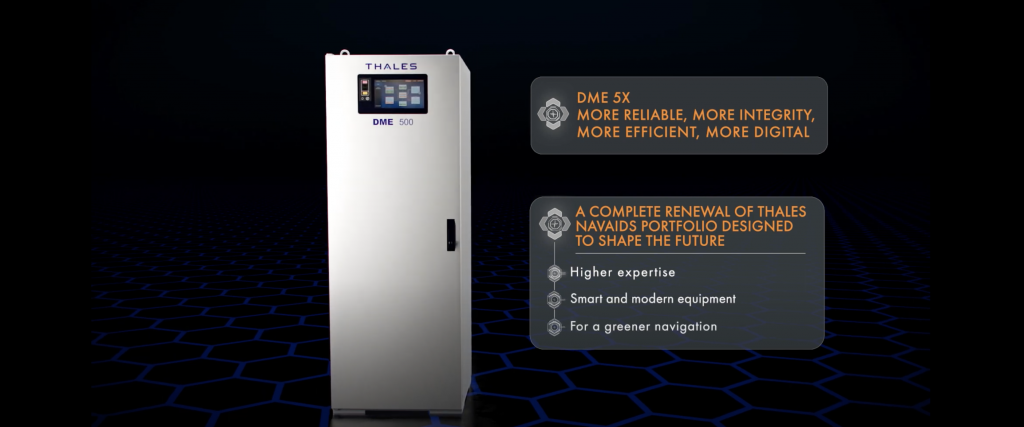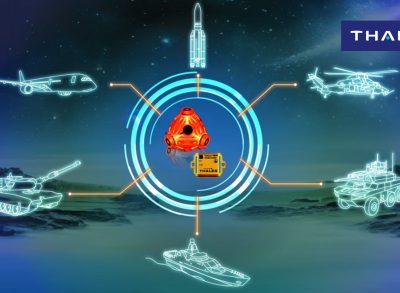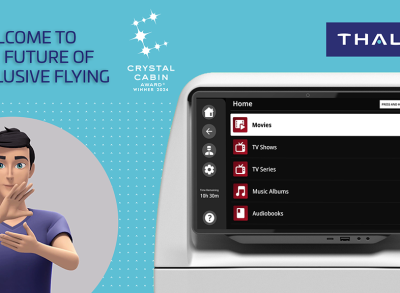Calling for back-ups– innovating with DME performance

Since 2013, EVAIR (EUROCONTROL Voluntary ATM Incident Reporting) has been recording, and reporting on, GPS outages in Europe. Since 2013, these incidents have been increasing. The causes for these outages vary greatly - from Private Personal Devices (PPD) turned on too close to air traffic to radio frequency interference and spoofing - but the latest report published in February 2022 noted that most areas affected by these outages “are still those where political tensions exist.” The current situation in Ukraine is doing little to quell concerns over these repeated incidents; if anything, those are increasing in related air traffic spaces.
The service bulletin reports several recommendations but the most important has been addressed to aircraft operators suggesting to avoid using as destination airports where only GNSS approach procedures are available.
The Air Traffic Management (ATM) industry, by virtue of its primary concern for safety, is prepared for such occurrences. Legacy systems such as Thales’ Distance Measuring Equipment (DME) continue to provide the necessary redundancy to ensure safe routing and landing at all times. In fact, Thales is currently innovating on the basis of these systems to provide innovative and safe alternative navigation aids.
Calling for GNSS back-ups
The introduction of Global Navigation Satellite Systems (GNSS), such as the GPS, has greatly facilitated airplane navigation around the world. It has made it seamless. Yet GNSS presents one major challenge: its signal is weak and can be easily jammed by a number of electromagnetic events – voluntary or not.
Aircraft Operators continue reporting GPS outages likely caused by radio frequency interference andspoofing events that impacted flights causing re-routing and destination changes
As such, Article 6 of European Commission (EC) Regulation 2018/1048, adopted in July 2018 (Regulation laying down airspace usage requirements and operating procedures concerning performance-based navigation), calls for ‘contingency measures’. It stipulates ATM and Air Navigation Service (ANS) providers should take ‘necessary measures’ to ensure that Alternative Position Navigation and Timing (A-PNT) solutions are in place to prevent service interruptions in GNSS-denied environments. In particular, this shall include “retaining a network of conventional navigation aids.”
In one article, the EC enshrines the importance of systems such as DMEs for the future of ATM.
Safety and performances in numbers
In rather simplistic terms, the future of ATM will be defined by two trends: the development of innovative solutions and the ease with which these solutions can be introduced in the ATM market. A number of A-PNT functionalities might therefore be emerging holding great promise for the future safety of navigation, but their implementation may be resource-intensive – time, manpower, energy, and financial.
Thales strongly believes that innovative A-PNT solutions can be found by leveraging years of DME experience and capabilities to introduce new functionalities that compensate for technological gaps. It does so by combining multiple DME systems to improve DME performance and provide precise positioning. At present, the use of multiple DMEs (DME/DME navigation) is already proving to be both effective and cost-efficient for civil aviation authorities. It is based on existing DMEs and is compatible across different generations of DMEs. This new, 5th generation of Thales's DME equipment is modern and supports Area Navigation (RNAV) extensive usage.
Over the longer term, Thales is working within the SESAR Joint Undertaking to continue innovating along the DME path. With the support of European funding, Thales is exploring multi-DME integrity monitoring, where the use of multiple DMEs not only increases precision and redundancy but also allows identification and discarding of erroneous signals for improved safety.
Passive ranging: shaping the future of air navigation
Within SESAR, Thales is also working in collaboration with Air Navigation Service Providers (ANSP) on developing a new way of using DMEs as passive ranging devices – DME based Passive Ranging (DMPR)[1]. Key to this new concept of use is reducing the land-air transmission protocol so as to free-up bandwidth in an already rather busy electromagnetic environment (e-DME).
Innovation need not entail a complete reinvention of the wheel; it is also about finding new ways to utilise tried and tested methods. Focusing on innovative DME functionalities, Thales is optimising and strengthening its 5th generation DMEs to provide a back up to GNSS navigation. It aims to provide its customers with cost-efficient, compatible and readily available APNT systems, ensuring safe ATM and bringing a future we can all trust one step closer to today.




